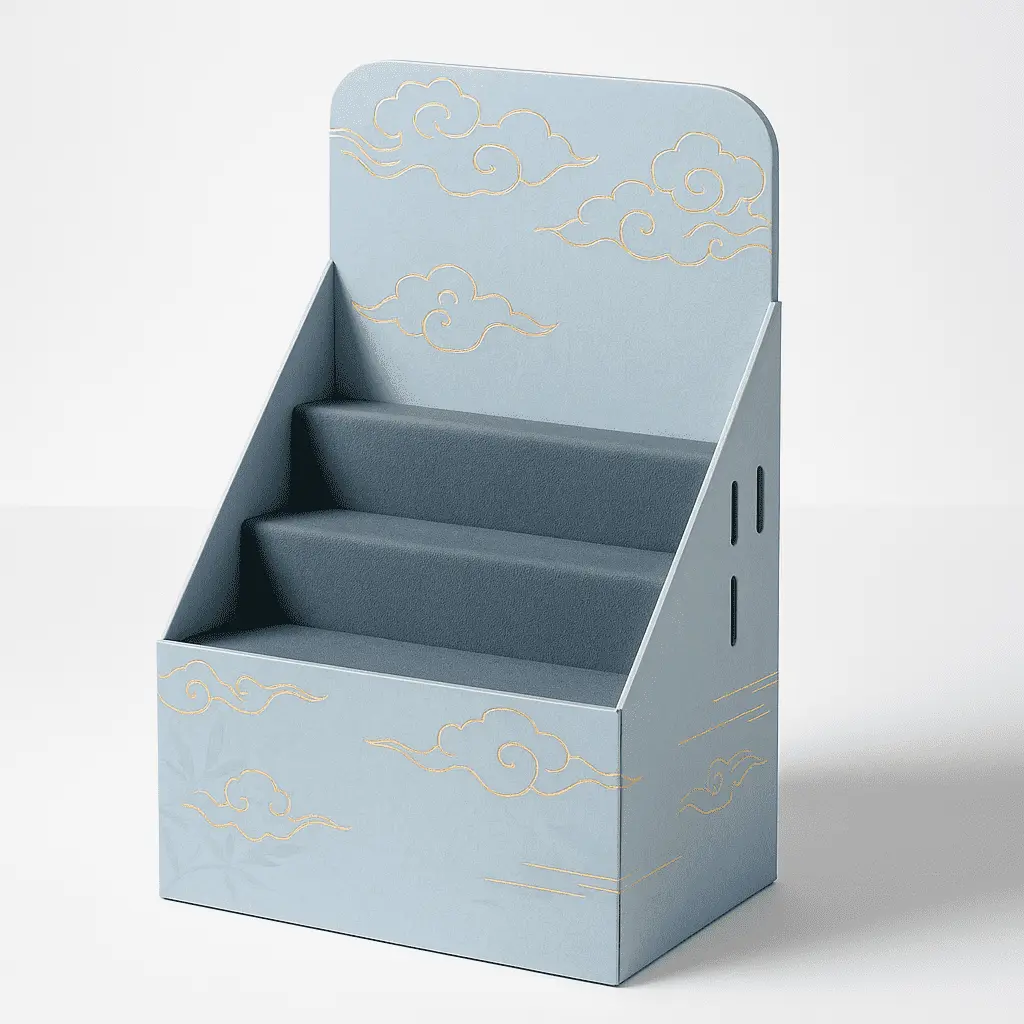The Psychology Behind Effective FSDU Design
Visual Appeal and Brand Recognition
The visual impact of an FSDU cannot be overstated. A well-designed display unit serves as a beacon, drawing customers' attention amidst a sea of products. The use of vibrant colors, striking graphics, and innovative shapes can create an instant connection with potential buyers. Moreover, effective FSDUs reinforce brand identity, utilizing consistent color schemes, logos, and messaging that align with the overall marketing strategy. This visual coherence not only enhances brand recognition but also builds trust and familiarity with consumers, making them more likely to engage with the displayed products.
Strategic Product Placement
The arrangement of products within an FSDU and free standing display units is a delicate art that can significantly influence buying decisions. By placing high-margin or promotional items at eye level, retailers can naturally direct customers' focus to these products. The concept of "eye-level is buy-level" is particularly relevant in FSDU design, as it capitalizes on the natural tendency of shoppers to engage with items that are easily within their line of sight. Additionally, grouping complementary products together can encourage impulse purchases and increase the average transaction value, as customers are presented with a convenient solution to multiple needs.
Emotional Triggers and Storytelling
Successful FSDUs go beyond mere product display; they evoke emotions and tell a story. By incorporating elements that resonate with the target audience's aspirations, lifestyle, or values, these displays can create a powerful emotional connection. For instance, a display unit for eco-friendly products might use natural materials and earthy tones to appeal to environmentally conscious consumers. Similarly, storytelling through imagery or concise messaging can help customers envision how the product fits into their lives, making the purchasing decision feel more personal and meaningful.
Maximizing the Impact of FSDUs in Retail Environments
Location and Traffic Flow Optimization
The effectiveness of an FSDU is heavily influenced by its placement within the store. High-traffic areas, such as entrances, checkout queues, and main aisles, offer prime locations for these displays. By analyzing customer flow patterns and identifying natural pause points in the shopping journey, retailers can strategically position FSDUs to maximize exposure and interaction. Moreover, the flexibility of these units allows for easy relocation, enabling stores to adapt to changing traffic patterns or seasonal promotions, ensuring that the displays consistently capture shopper attention.
Interactive Elements and Technology Integration
As retail environments evolve, so too do the capabilities of FSDUs and free standing display units. Incorporating interactive elements or digital technology can significantly enhance engagement and provide a memorable shopping experience. Touch screens offering product information, QR codes linking to online content, or augmented reality features that allow customers to visualize products in use are innovative ways to leverage technology within FSDUs. These interactive components not only capture attention but also provide valuable information that can help solidify purchasing decisions, bridging the gap between physical and digital retail experiences.
Seasonal and Event-Specific Adaptability
The versatility of FSDUs makes them ideal for seasonal promotions and event-specific marketing campaigns. By designing displays with interchangeable elements, retailers can quickly update their messaging and product offerings to align with holidays, seasons, or special events. This adaptability ensures that the retail environment remains fresh and exciting for repeat customers while also capitalizing on timely purchasing motivations. For example, a display unit showcasing sunscreen and beach accessories can be easily transformed to feature back-to-school supplies as summer transitions to fall, maintaining relevance and driving sales throughout the year.
Measuring and Optimizing FSDU Performance
Data-Driven Design Improvements
To truly understand the impact of FSDUs on buying decisions, it's essential to implement robust tracking and analysis methods. Advanced analytics tools can provide insights into customer interaction rates, dwell time, and conversion metrics specific to each display unit. By collecting and analyzing this data, retailers can identify which design elements, product combinations, or placements are most effective in driving sales. This information can then be used to refine future FSDU designs, ensuring continuous improvement and maximized return on investment.
A/B Testing and Iterative Optimization
The dynamic nature of retail environments provides an ideal setting for A/B testing different FSDU designs and strategies. By simultaneously deploying variations of a display unit and free standing display units and comparing their performance, retailers can gain valuable insights into consumer preferences and behaviors. This iterative approach to optimization allows for data-driven decision-making, ensuring that each iteration of an FSDU is more effective than the last. Factors such as color schemes, product placement, messaging, and even the shape of the display unit itself can be tested and refined to achieve optimal results.
Cross-Channel Integration and Omnichannel Strategies
While FSDUs are primarily physical marketing tools, their impact can be amplified through integration with digital and omnichannel strategies. By incorporating elements that encourage online engagement, such as social media hashtags or exclusive online offers, retailers can extend the influence of their in-store displays beyond the physical space. This cross-channel approach not only enhances the overall customer experience but also provides additional touchpoints for measuring the effectiveness of FSDUs in driving both in-store and online sales. The synergy between physical displays and digital marketing efforts creates a cohesive brand experience that can significantly influence buying decisions across all channels.
Conclusion
Free standing display units have emerged as powerful tools in shaping consumer behavior and driving purchasing decisions in retail environments. By leveraging psychological principles, strategic design, and data-driven optimization, FSDUs can significantly impact a brand's in-store performance. As the retail landscape continues to evolve, the adaptability and effectiveness of these displays make them an invaluable asset for businesses looking to enhance their physical presence and connect with customers in meaningful ways. The future of retail will undoubtedly see further innovations in FSDU technology and design, offering exciting opportunities for brands to create immersive and persuasive shopping experiences.
Contact Us
Ready to elevate your in-store marketing strategy with custom Free Standing Display Units? Contact our team of experts at Guangzhou Huadu Fetching Color Printing and Packaging Co., Ltd. to discuss how we can create tailored FSDU solutions that align with your brand and drive sales. Reach out to us at support@fetchingprinting.com to start crafting displays that truly impact buying decisions.





